#Enheduanna
Text
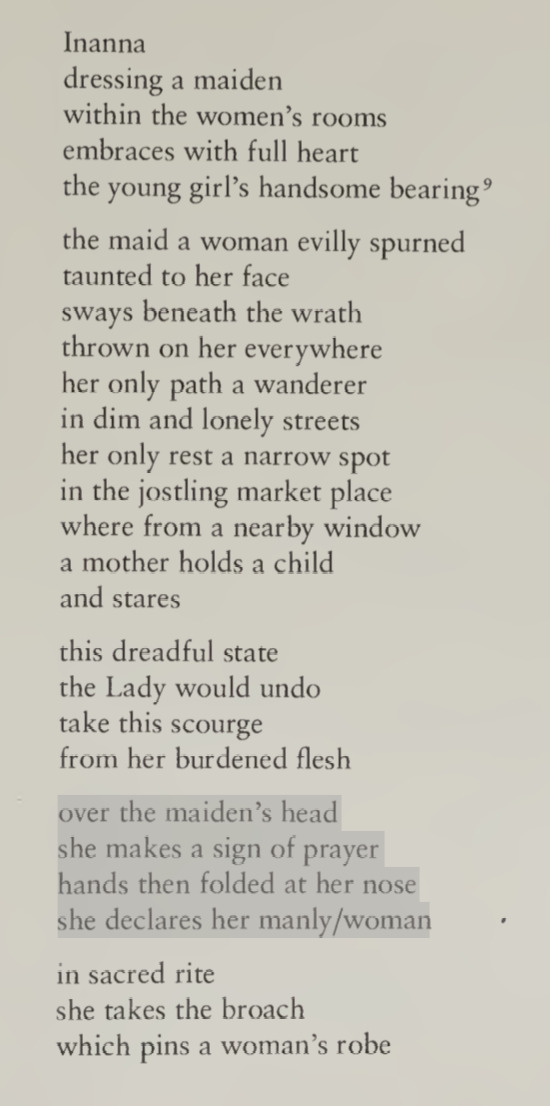
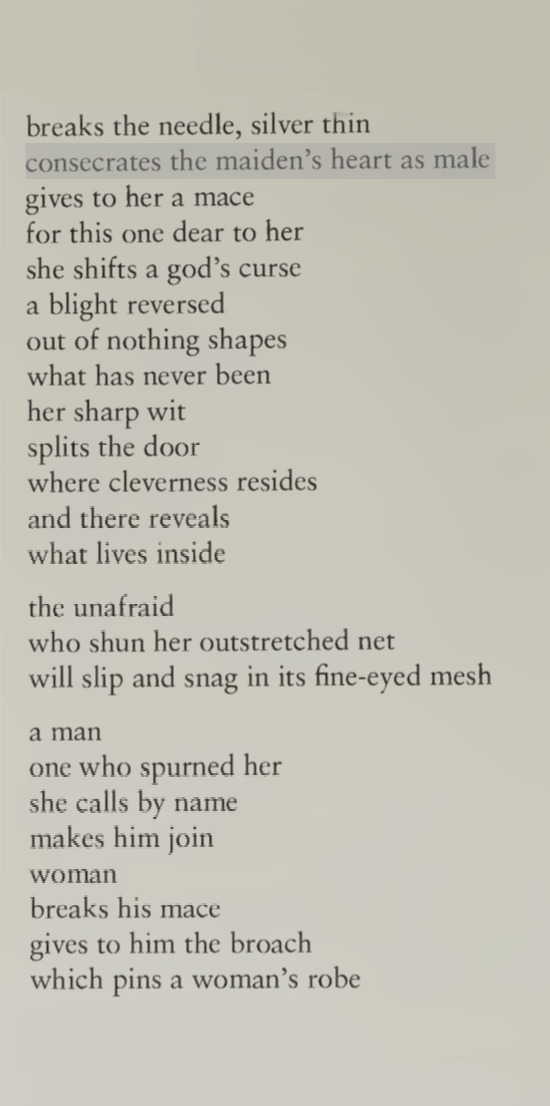

from Lady of the Largest Heart, a poem by High Priestess Enheduanna & translated by Betty De Shong Meador.
552 notes
·
View notes
Text
Let them know that your gaze is terrifying, and that you lift your terrifying gaze. Let them know that your eyes flash and flicker. Let them know that you are headstrong and defiant. Let them know that you always stand triumphant.
"The Exaltation of Inana," Enheduana, trans. Sophus Helle
184 notes
·
View notes
Text
Time Travel Question : Assorted Performances I
These Questions are the result of suggestions from the previous iteration.
This category may include suggestions made too late to fall into the correct grouping.
Please add new suggestions below if you have them for future consideration.
#Time Travel#Drama History#Ancient Athens#Ancient Greece#Hegelochus#Euripides#Orestes#Aristophanes#Dionysian Festival#Aeschylus#Lost Literature#Ancient Greek Literature#Oresteia#Homer#Classical Athens#Music History#Ancient World#Enheduanna#Ur#Sumerians#Ancient Egypt#Sappho#Epidaurus
107 notes
·
View notes
Text

Divine Love. Art by Rubi Do Trinh, from the Star of Inanna Tarot.
As we were trying to conceptualize the second Oracle Card for Star of Inanna, many things came into our discussion. One of which was to have something about the Bull, since for some reasons, the ancient civilizations were obsessed with these animals. The Sumerian crown of divinity is also said to have pairs of bull horns on it. Though that subject led through many interesting corridors of research, we finally decided instead to go with this card expressing the Unconditional Love that Inanna has for her subject. Just like the wild Descent oracle card that can appear anywhere in the deck, we feel this Divine Love card can also manifest anywhere in your reading when you need it most.
The message here reminds us that the unconditional love and light from the Goddess and higher beings always surround us. We only need to find a moment of stillness to tune into ourselves despite all the chaos and heartbreak. Personally, I (Rubi) believe in self empowerment AND that divine connection can only happen when we are deeply in touch with our core essence. No matter how hard Inanna or our higher help tries to assist us, if we are only open to the brutal external circumstances and close ourselves off to the inner guidance, they can’t reach us. They can’t resonate and activate that which is divine within us because we deny it ourselves.
The painting for this card depicts the scene where Enheduanna in her exile wrote the hymns to celebrate Inanna, her beloved Goddess late in the night. While her home temple in Ur fell into the hand of the usurper Lugalanne, being stripped of her title, thrown out of her city into the land of the dead, she managed to find the immovable center within her to connect with Inanna and plead for the return of justice. As the world’s first known author, a prominent historical figure of Earth, Enheduanna’s appearance helps ground the deck into our human timeline.
#Rubi Do Trinh#Star of Inanna Tarot#Divine Love#Extra Cards#Tarot#Folklore#Sumeria#Inanna#Enheduanna
25 notes
·
View notes
Quote
Let them
know that you grind
skulls to dust. Let
them know that you
eat corpses like a lion.
Enheduanna, Enheduana: The Complete Poems of the World’s First Author, to Inanna
198 notes
·
View notes
Text


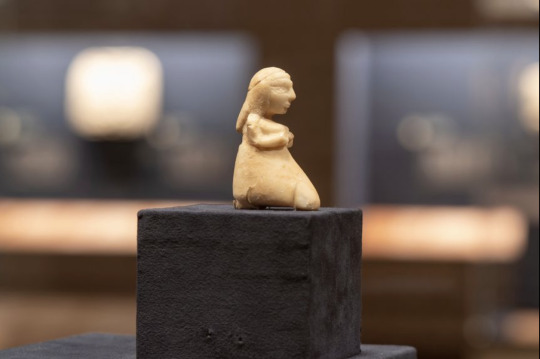



While I'm promoting museum visits. The Morgan Library's exhibit on the women of Mesopotamia ends February 19. If I had the time, I'd fly to New York just to see it. If I had the time, I'd be there right now.
193 notes
·
View notes
Text
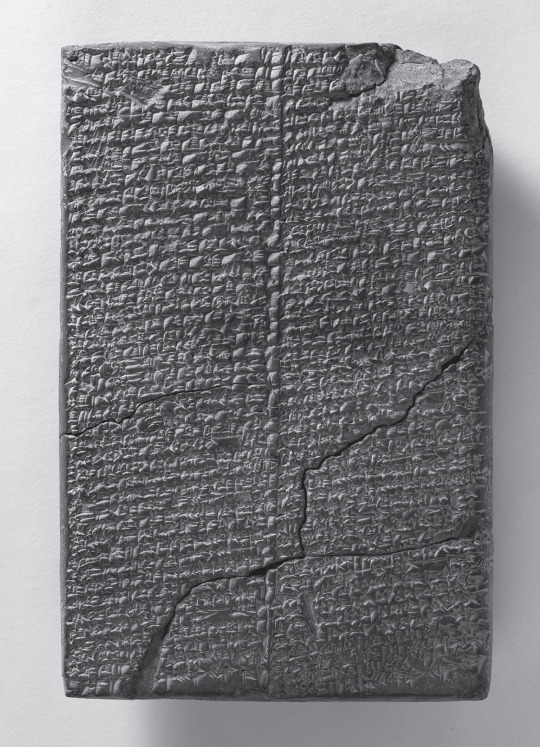
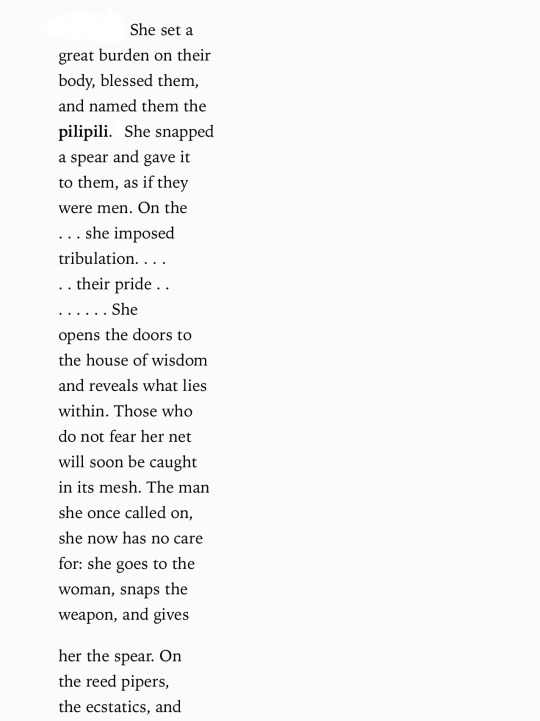

—Enheduana, from “The Hymn to Inana”
Gender-bending in the world’s most ancient authored text, newly translated by Sophus Helle.
From an essay by the translator: “The evidence for activities that sought to actively subvert established gender norms is much clearer when we turn to another and much more motley class of ritual performers. These included the kurĝara, the saĝ-ursaĝ, and the pilipili, as well as several other groups who were associated with the worship of Inana and who performed rituals in which they upended the usual conventions of gender. Ancient texts describe processions in honor of Inana in which the participants would wear female clothes on one side of their body and male clothes on the other. They would brandish weapons, which were the traditional signs of masculinity, as well as weaving instruments, such as spindles and distaffs, the traditional signs of femininity. By mixing and juxtaposing the standard symbols of gender, they would introduce an element of confusion and capriciousness into the conventions of gendered behavior: if the same person could wear both female and male clothes, viewers were led to ponder the nature of gender itself. It is highly likely that the various groups, such as the kurĝara and the saĝ-ursaĝ, would subvert gender norms in different ways: some were perhaps individuals who generally appeared to be female but performed stereotypically male actions, others the reverse, but because of the limitations of our sources, it is difficult to reconstruct the differences between them. Either way, these groups were all engaged in a playful scrambling of what was thought to be typically male and typically female.”
On the pilipili: “Inana then blessed them, named them, and gave them a snapped spear ‘as if they were a man’ (ll. 80–81). The passage implies that they were generally seen as women and that they announced their distance from normative gender by carrying a broken emblem of maleness. However, the text identifies them not with one gender or the other but with the transition between genders, referring to them as ‘the changed pilipili’ (l. 88). Together with the reed pipers, the kurĝara, the saĝ-ursaĝ, and the ecstatics, they are depicted as ritual lamenters: Inana ‘makes them weep and wail for her,’ so that they ‘exhaust themselves with tears and tears’ (ll. 87, 90).”

#literature#poetry#Inana#inanna#Enheduana#assyriology#Sophus helle#enheduanna#genderqueer#nonbinary#gender nonconforming#Sumerian literature
129 notes
·
View notes
Text

Enheduanna 𒂗𒃶𒌌𒀭𒈾 (2286-2251 BCE)
The first author in history whose name was known was Enheduanna, the high priestess of the moon god Nanna or Sīn in the Sumerian city-state of Ur (in present day Iraq) during the reign of her father, Sargon of Akkad. Her name means “high priestess, ornament of heaven.”
48 notes
·
View notes
Photo

Inanna and Ebih
Inanna and Ebih is a Sumerian/Akkadian poem attributed to Enheduanna (l. 2285-2250 BCE), daughter of Sargon of Akkad. The work's original title is Inninmehusa ("Goddess of the Fearsome Powers") and tells the story of the goddess Inanna's victory over the mountain god Ebih after he fails to show her proper respect.
Continue reading...
106 notes
·
View notes
Text
Enheduanna
Enheduanna, the Akkadian poet, stands as a towering figure in ancient Mesopotamian literature, revered as the world's first known author and poet. Born around 2285 BCE, Enheduanna was the daughter of Sargon of Akkad, the legendary ruler often credited as the founder of the world's first empire. Her precise familial ties remain debated among scholars, but what's clear is that Sargon appointed her as the high priestess of the most important temple in Sumer, located in the city of Ur.
Enheduanna's contributions to literature and religion are immense. She played a pivotal role in melding the Sumerian gods with the Akkadian ones, fostering stability crucial for the thriving of Sargon's empire. Her literary works, though only rediscovered in modern times, set paradigms for poetry, psalms, and prayers that influenced religious traditions for centuries to come.
Her most celebrated compositions include hymns such as “Nin me šara” ("The Exaltation of Inanna") and “Inninmehusa” ("Goddess of the Fearsome Powers" dedicated to the goddess Inanna. These hymns redefined the perception of deities, providing a common religious identity across the empire. Enheduanna's writings also offer a glimpse into her personal frustrations, religious devotion, and responses to the world around her.
Enheduanna's life was as remarkable as her literary legacy. She endured political upheavals, including an attempted coup by a Sumerian rebel named Lugal-Ane, which forced her into exile. However, her resilience and divine intercession eventually led to her restoration as high priestess.
Despite the controversy surrounding her authorship, with some scholars questioning whether she personally wrote the hymns attributed to her, textual and historical evidence suggests otherwise. Enheduanna's works bear her name, and she explicitly claims authorship in some of her compositions.
#enheduanna#female writers#authors#mesopotamia#babylon#akkadian#sumerian#literature#history#women in history#inanna
13 notes
·
View notes
Link
“Hope, resistance, flirtation: these are common threads among the first versions of the Grimms’ fairy tales published in 1812, before they were heavily edited by the brothers ahead of Edgar Taylor’s English translations, first published in 1823. At this point, the names of Dortchen Wild, Marie Hassenpflug and other young female contributors such as Jenny von Droste-Hülshoff had already disappeared from the record, their husbands, sons and brothers ensuring their contributions would not be recognised.”
....
“... it was aristocratic women in the Parisian salons of the 1690s who invented not only our modern word ‘fairy tale’ (contes de fée in French), but also one of its most enduring examples: La Belle et la Bête or Beauty and the Beast, whose author was the aristocratic widow Gabrielle-Suzanne Barbot de Villeneuve, whom Voltaire referred to as ‘that old shrew’. Jubber estimates that roughly two-thirds of the 90 tales surviving from this period were written by women, even if this is no longer widely known today. The same fate has been suffered by storytellers of colour, such as Hanna Diyab from Syria, who brought Aladdin and Ali Baba to Europe in the 18th century.
How many other collections of tales and fables originated with women, not men? What about Aesop’s fables? Homer’s Iliad? The Bible? If we go back far enough, it may be that we owe most of our classic tales to the oral storytelling tradition women have kept alive for thousands of years. Note that the oldest named author in history may well be a woman: the Sumerian priestess Enheduanna is believed to be the author of the Exaltation of Inanna and the Sumerian Temple Hymns, dating from the 23rd century BCE. “
#christine lehnen#fairy tales#fairy tale origins#gabrielle-suzanne barbot de villeneuve#hanna diyab#enheduanna#brothers grimm#fables#contes de fée
145 notes
·
View notes
Text
I want to ramble about Enheduanna so bad rn, mutuals grant me strength
@tasteless-tea @eepybeepy46 please grant me restraint
12 notes
·
View notes
Text

This hymn in praise of writing just punched me in the chest. We weave writing! New things are born!
78 notes
·
View notes
Text
ENHEDUANNA // POET
“The earliest known poet who lived in the Sumerian city-state of Ur in the 23rd Century BC. She was a high priestess and her collection of work, known as “The Sumerian Temple Hymns”, makes her the first named author of any kind in human civilization.”

7 notes
·
View notes
Text

hymn to inanna C (enheduanna)
16 notes
·
View notes
Quote
Your heart is dusk, moonlight cannot enter you.
Enheduanna, Enheduana: The Complete Poems of the World’s First Author, to Ninhursag
109 notes
·
View notes